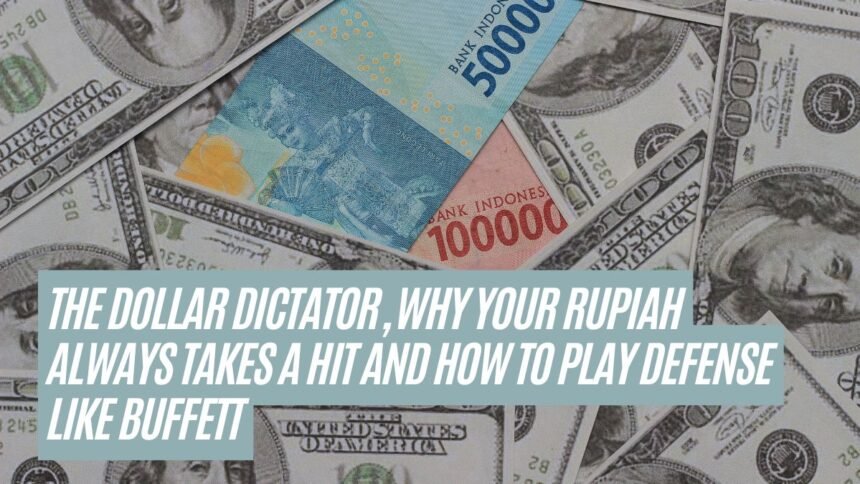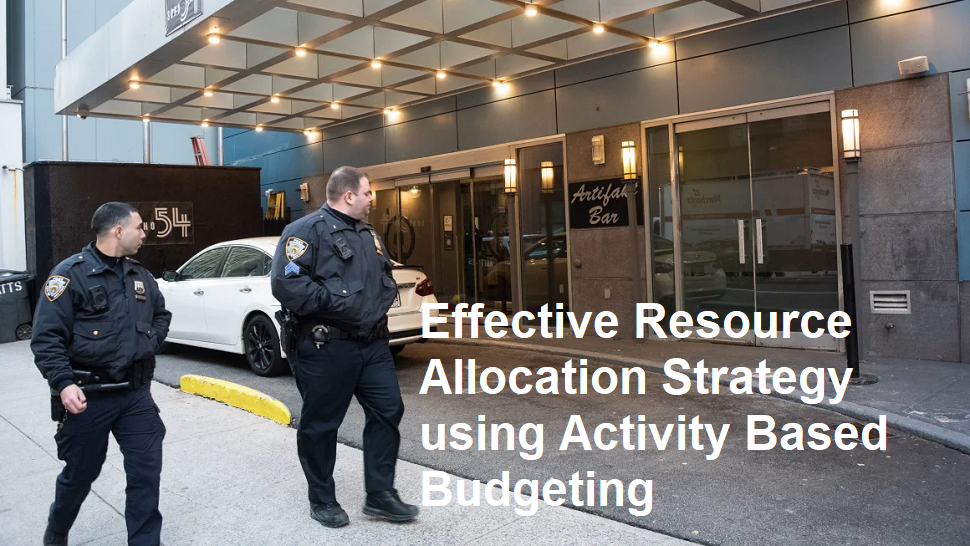Hey guys, let’s get real for a second. We’ve all been there, you check the USD/IDR rate, and suddenly, you feel a little poorer. The US Dollar (USD) just seems to run the show globally, doesn’t it? It’s like the high school jock everyone looks up to it, and our beloved Rupiah (IDR), well, it often gets pushed around.
But why? And more importantly, how can we stop worrying about every little Fed meeting and start building real wealth, the kind that survives these currency tantrums?
We’re going to break down the dollar’s swagger and then steal a page from the playbook of the ultimate sensei, Warren Buffett, to secure our own financial futures. Forget the noise, let’s talk strategy.
The USD’s Superpower, It’s Not Just About America
You’ve got to understand, the USD isn’t just America’s currency, it’s the world’s reserve currency. Think of it as the ultimate financial lingua franca. Oil, gold, massive international loans they’re mostly priced in dollars. This is what we call the Petrodollar System and it gives the US Federal Reserve (The Fed) outsized power.
When the Fed raises interest rates, it’s basically saying, “Hey world, you can get a safer, better return on your money by putting it in US Treasury bonds.” Where does that money come from? It flows out of emerging markets like Indonesia, turning our Rupiah into USD to chase those higher, safer US returns. That’s why the Rupiah weakens. Simple economics, brutal consequences.
Now that we know the enemy, let’s build an impenetrable fortress for your money.
Buffett’s Rule #1, Seriously, Invest in Yourself (The Ultimate Moat)
Honestly? This is the one that gets ignored the most, and it’s arguably the most powerful. Buffett says, “The best investment you can make is in your own abilities.” You know why? It’s the one asset the tax man can’t touch, the one thing inflation won’t devalue, and the one skill no currency crisis can steal.
If you’re a programmer, become the best damn programmer. If you’re a chef, master a cuisine. Your ability to earn more, to adapt, to innovate that’s your greatest economic moat. You don’t need a strong Rupiah to buy your skills, the global market pays you based on your value. I personally dumped a ton of cash into professional courses this year. Did it hurt? Yeah. Am I already seeing the return? Absolutely. Don’t wait for the economy to save you, make yourself indispensable.
Dedicate 5% of your next paycheck to buying a skill (a course, a high-value book, a certification). You’re your own best stock.
Buffett’s Rule #2, Think Like an Owner, Not a Day Trader (Ignore the Squiggly Lines)
Most people treat the stock market like a casino, constantly staring at the screen and freaking out over a 1% dip. That’s a trader mindset. Buffett thinks like an owner. When you buy a stock, you’re buying a piece of a business.
Do you check the value of your local convenience store every hour? No! You check if it’s profitable, if it has a strong competitive advantage (Buffett calls this an “economic moat”), and if it has good management. That’s the mindset! Look for companies in Indonesia or globally that have strong pricing power, monopolistic tendencies, or indispensable brand names. They can shrug off a volatile IDR/USD rate because they’re fundamentally great businesses. Don’t buy a stock just because your friend told you to, buy a business you’d be happy owning even if the market shut down for five years.
Identify one Indonesian company that provides a product or service you absolutely cannot live without. Research their fundamentals. That’s a potential business, not just a stock.
Buffett’s Rule #3, Always Have a Margin of Safety (Your Error Buffer)
This is Benjamin Graham’s classic concept that Buffett champions, never pay full price. A margin of safety simply means buying an asset when its market price is significantly lower than its estimated intrinsic value (what you calculate the business is actually worth).
Why is this crucial, especially in volatile markets like ours? Because the world is unpredictable! The Fed might hike rates, commodity prices might crash, or the Rupiah might go sideways we all make mistakes in our value calculations. The Margin of Safety is your financial life jacket. If a stock is truly worth $100, you should aim to buy it at $70 or $60. That $30 or $40 gap protects you from economic uncertainty and gives you an instant upside when the market eventually wakes up and values the company correctly.
Before buying anything (stock, property, even a new gadget), ask yourself “Am I getting more value than I’m paying for? If I’m wrong, how much room do I have to be wrong?” Buy low, be safe.
Buffett’s Rule #4, Be Fearful When Others Are Greedy (Cash is King)
Think about 2020 when everything was panicking, or those moments when the Rupiah takes a terrifying dip. That’s when most retail investors panic sell. That, my friends, is when you need to be greedy (or at least, prepared).
And when everyone is hyping up every single asset, buying Bitcoin, Dogecoin, or whatever is next, and bragging about their gains? That’s when you must be fearful.
Buffett keeps a HUGE pile of cash (billions, seriously) in his company, Berkshire Hathaway. Not because he loves earning 0.5% interest, but because that cash is his “Option on the Future.” When a crisis hits and everyone else is forced to sell their assets cheaply, he has the dry powder to swoop in and buy quality businesses at rock-bottom prices. The fear of the crowd creates his opportunity. Don’t be a sheep, be a prepared wolf.
Instead of immediately investing every last penny, build a small ‘Opportunity Fund’ of cash (maybe 10-15% of your investment capital). Wait for the next market panic, then buy fearfully.
My Final Two Cents, Stop Chasing the Dragon
Look, the USD will always be the USD. The Fed will always make decisions that affect the Rupiah, whether you like it or not. If you spend your life trying to perfectly predict what a politician or a central bank will do next, you’re going to lose your mind and your money.
Forget the short-term drama. Focus on the four principles above. Invest in the thing that matters most (you). Buy great businesses with strong moats (even if they’re local Indonesian heroes). Demand a price that gives you a safety cushion. And keep a little cash on the side, just waiting for the next market tantrum. That, my friend, is how you build wealth that transcends the daily dollar-rupiah chaos. You’ve got this.












